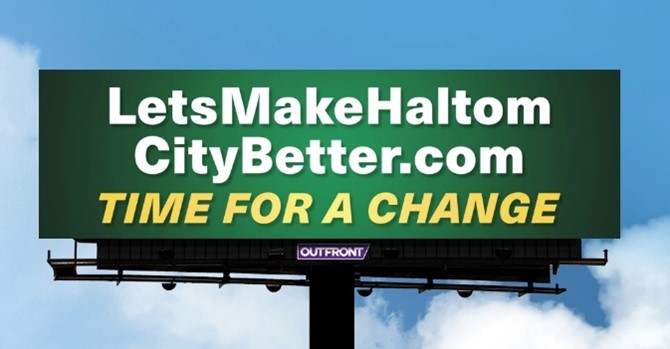HALTOM CITY, TX, November 26, 2024 /24-7PressRelease/ -- A company called Big Think provides an online platform for the world's leading experts to weigh in on current issues. "At Big Think, we introduce you to the brightest minds and boldest ideas of our time, inviting viewers to explore new ways to work, live, and understand our ever-changing world."
A Big Think article about the need for parking reform recently caught the attention of the Haltom United Business Alliance (HUBA). For years, HUBA has been advocating for some type of parking reform in Haltom City, at least for commercial properties in the older south and central areas of the city. Current parking minimums are a clear barrier to redevelopment, particularly along the main corridors of Denton Highway, Carson, NE 28th Street, and Belknap. Googling the topic finds lots of articles about cities that are using it as a powerful tool to revitalize their aging older areas. Many Texas cities have already used this tool to help older vacant buildings get put back into service.
The article, entitled These maps provide graphic evidence of how parking lots "eat" U.S. cities, claims that "Parking lots are about one-fifth of all land in U.S. city centers, making them "easy to get to, but not worth arriving at." A number of examples are cited, including a few right here in Texas. "Visit the center of Arlington, Texas, and you won't have trouble finding a parking space. You will have trouble finding anything else, because parking space takes up no less than 42% of the city center." Also, "Visitors to Lubbock, Texas come for the Buddy Holly Museum, but not for its vibrant downtown — because there isn't one. Here's a reason: 35% of the land in central Lubbock is parking lots."
According to HUBA Communications Manager Joe Palmer, "it's bad enough there is so much unused (and unattractive) pavement in the declining south and central areas of Haltom City. What's worse is the negative impact parking codes have on urban renewal." Although unused parking spaces abound, investors and business owners often learn that a property of interest would need more parking in order to get city approval. This usually occurs if an older building is being considered for a new use, triggering a different "parking minimum" requirement. The result? Most investors decide to go elsewhere, whether to newer areas of the city with newer buildings and more land, or to another city altogether. Time and again, the long-established neighborhoods in Haltom City lose out.
Even if the city is not interested in total parking reform, leadership should at least create an overlay district (for the areas outlined above) where parking decisions are left to property owners. Property owners are highly invested in getting it right -- the success or failure of their endeavor will directly impact their bottom line.
For more information about parking reform in America, check out the Parking Reform Network (PRN) as cited in the Big Think article. PRN has a Parking Mandate map showing thousands of cities and towns that that have already adopted parking reforms.
About Haltom United Business Alliance
Haltom United Business Alliance (HUBA) wants to give members of Haltom City's business community an advocate and to keep those businesses informed about issues that affect them. They want to make sure Haltom City is business friendly and nurtures small business growth, including automotive businesses in the industrial districts, and bring more restaurants including breweries and eventually a major grocery store to the city. New businesses and growth in existing businesses will create a stronger tax base which will allow the city to pay its first responders wages that are competitive with surrounding cities while improving Haltom City's facilities and infrastructure. HUBA believes that the southern and central parts of the city need a revitalization plan, to prevent further degradation in those areas, and wants that to happen before the inner-city experiences increased crime and more blight. As retail and office uses are in decline, it's more critical than ever to attract new businesses. They believe that such a plan requires a strong relationship and support of the business community. Anyone who owns a business in Haltom City is eligible to join HUBA. Dues are $20 annually or $50 for a lifetime membership, and membership is 100% confidential. To join, contact Joe Palmer at (682) 310-0591 or by email at HUBAgrp@gmail.com. Visit the group's Facebook at Haltom United Business Alliance.
About Make Haltom City Thrive Again
The Make Haltom City Thrive Again is a movement to return prosperity to the older parts of South and Central Haltom City by luring the small businesses that have left over the past decades back to Haltom City. A vibrant business community not only allows for greater employment and choice of goods and services, but also can ease the tax burden on residents. The movement is led by local entrepreneur and business owner Ron Sturgeon. For more on Sturgeon's ideas and background, check out his book, Keeping the Lights on Downtown in America's Small Cities and watch the videos on his Facebook page. Ron is also the founder of the Haltom United Business Alliance (HUBA) which represents existing business interests in Haltom City and promotes growth of diverse businesses. HUBA is not a political action committee and does not endorse candidates. If/when Ron endorses candidates, he will do so on his own via the Make Haltom City Thrive Again organization.
# # #
Contact Information
Joe Palmer
Haltom United Business Alliance
Haltom City, Texas
United States
Telephone: 6823100591
Email: Email Us Here
 +1 888-880-9539
+1 888-880-9539


